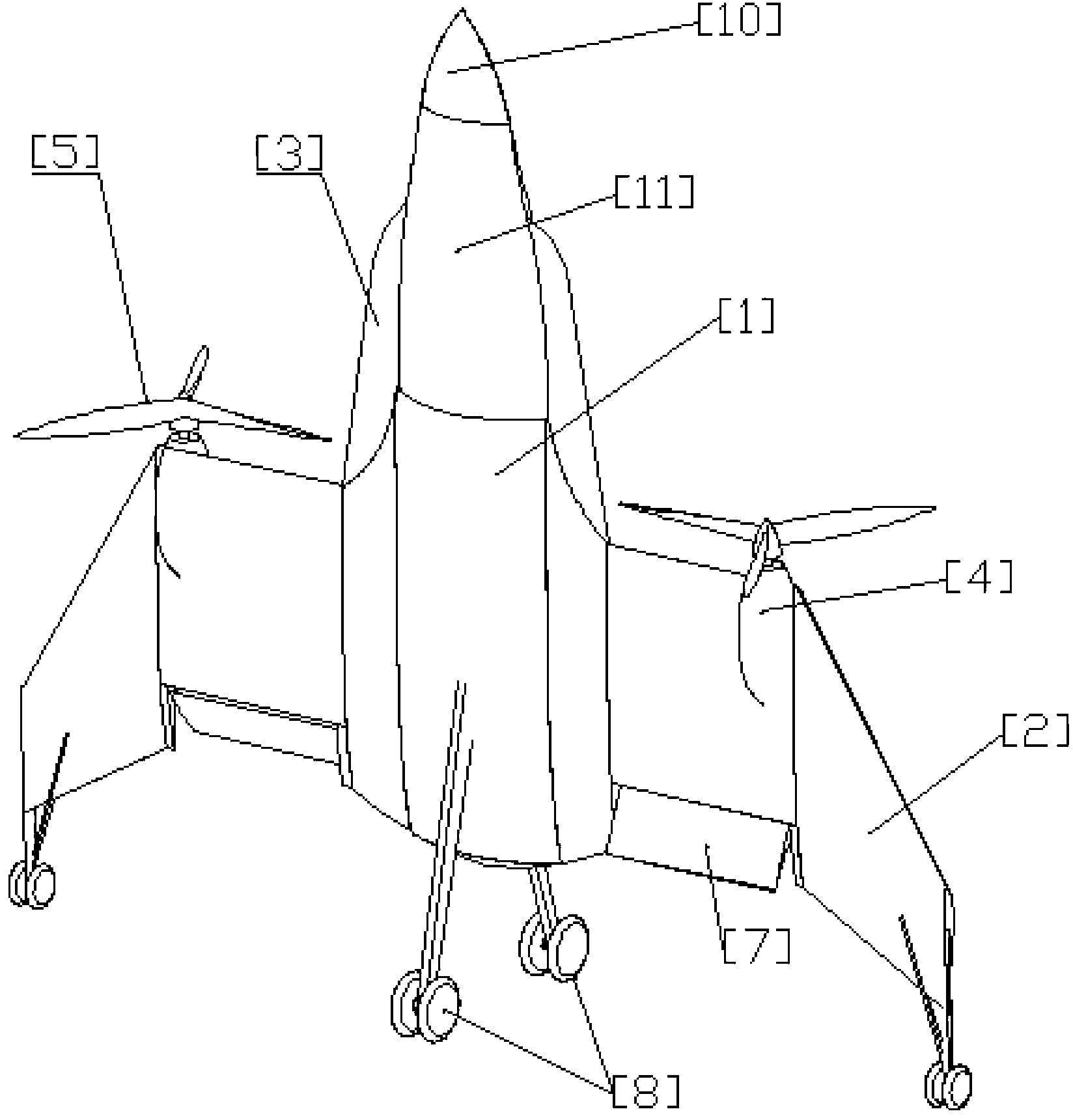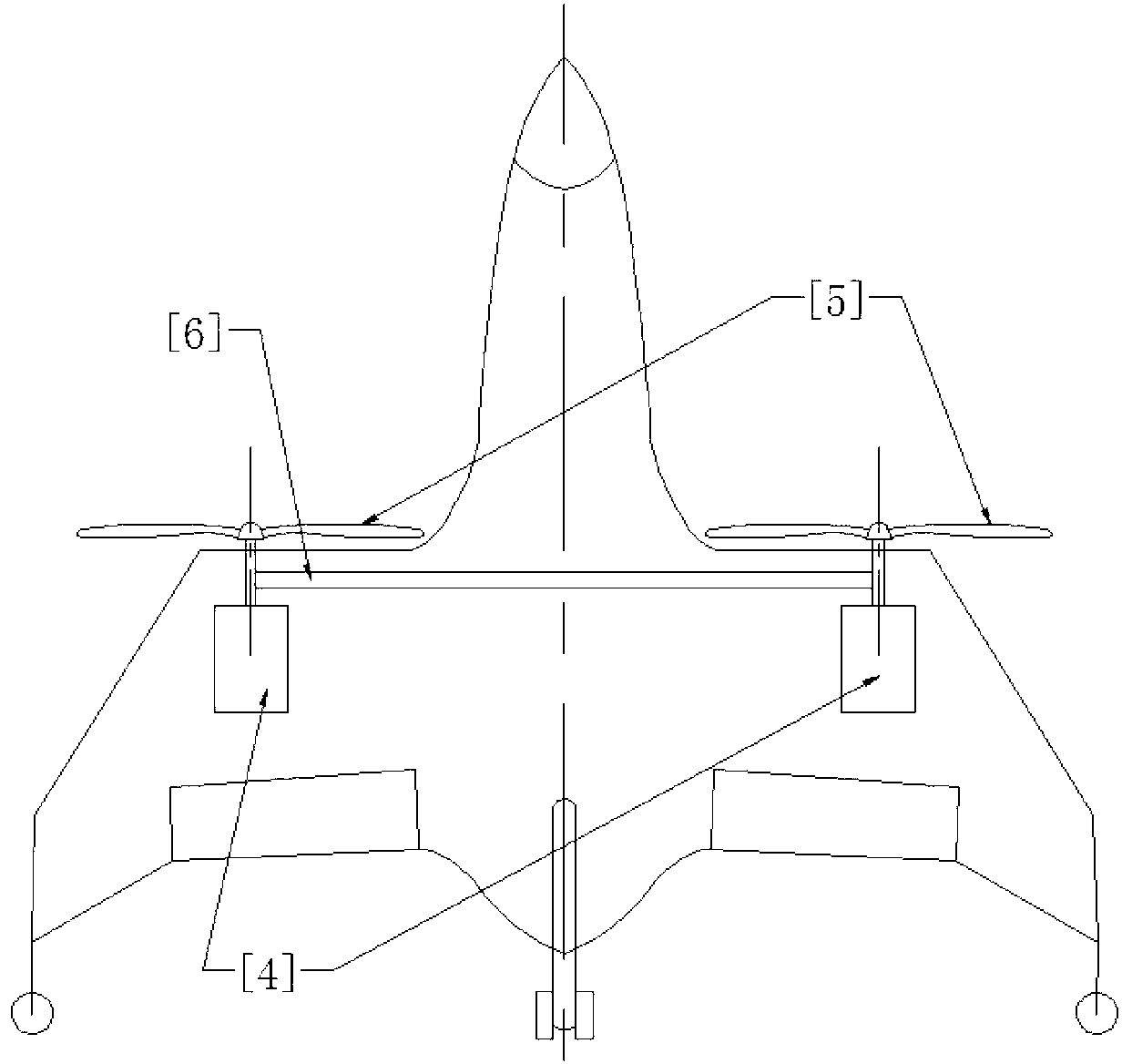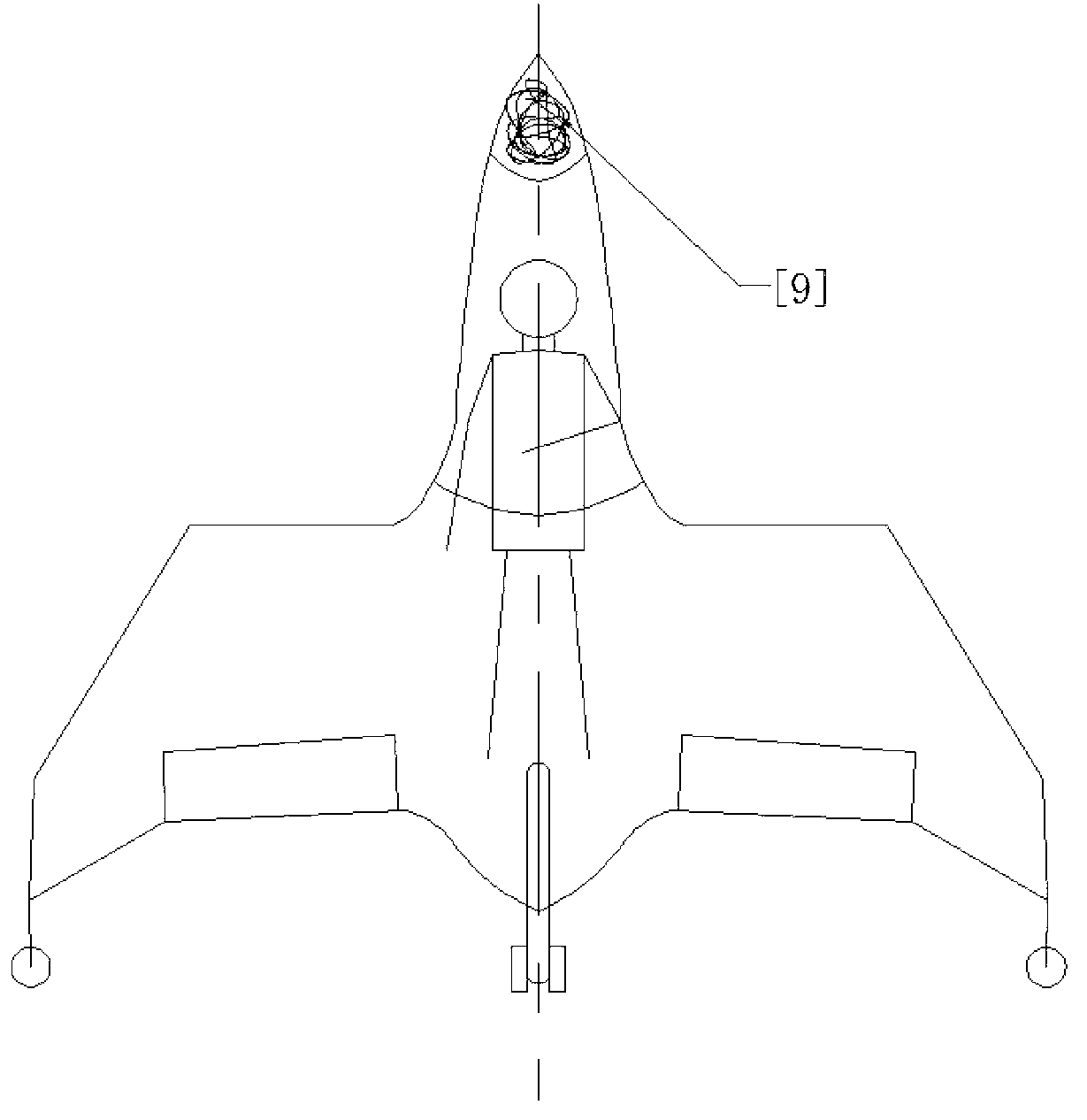Tailless layout single tail seat type vertical take-off and landing aircraft
A single-person aircraft, vertical take-off and landing technology, applied in the field of single-person aircraft, can solve problems such as complex structure, poor reliability, and high cost
- Summary
- Abstract
- Description
- Claims
- Application Information
AI Technical Summary
Problems solved by technology
Method used
Image
Examples
no. 1 example
[0027] figure 1 -3 represents a single-person aircraft with vertical take-off and landing (VTOL) capability according to the first embodiment of the present invention, which includes a fuselage 1, wings 2, side wings 3, engines 4, variable-pitch rotors 5, linkage Shaft 6, elevon 7, landing gear 8, parachute 9, parachute compartment 10 and canopy 11. The one-man flying vehicle according to this embodiment works as follows:
[0028] - In the vertical take-off and landing phase, the head of the aircraft is facing upwards, and it takes off and lands in a tail position. The engine 4 drives two variable-pitch rotors 5 to rotate to generate lift to overcome gravity and realize vertical take-off and landing. At this stage, the heading stability is maintained by adjusting the pitch difference of the variable-pitch rotor 5, and the stability and control of roll and pitch are realized through the deflection of the elevon 7, since the elevon 7 is in the slipstream region of the variable-...
no. 2 example
[0036] Figure 4 A single-person aircraft with vertical take-off and landing (VTOL) capability representing the second embodiment of the present invention, which includes a fuselage 1, wings 2, side strip wings 3, electric motors 12, fixed-distance rotors 13, small vortex Fan engine 14, elevon 7, landing gear 8, parachute 9, parachute compartment 10, canopy 11 and battery 15 ( Figure 5 ). The one-man flying vehicle according to this embodiment works as follows:
[0037] - In the vertical take-off and landing phase, the tail-sitting method is also used to take off and land, and the battery 15 ( Figure 5 ) to supply power to the motor 12, and the motor 12 drives the two fixed-distance rotors 13 to rotate to generate lift to overcome gravity and realize vertical take-off and landing. At this stage, the heading stability is maintained by adjusting the rotational speed difference of the fixed-pitch rotor 13, and the stabilization in other directions is the same as in the first...
PUM
 Login to View More
Login to View More Abstract
Description
Claims
Application Information
 Login to View More
Login to View More - R&D
- Intellectual Property
- Life Sciences
- Materials
- Tech Scout
- Unparalleled Data Quality
- Higher Quality Content
- 60% Fewer Hallucinations
Browse by: Latest US Patents, China's latest patents, Technical Efficacy Thesaurus, Application Domain, Technology Topic, Popular Technical Reports.
© 2025 PatSnap. All rights reserved.Legal|Privacy policy|Modern Slavery Act Transparency Statement|Sitemap|About US| Contact US: help@patsnap.com



